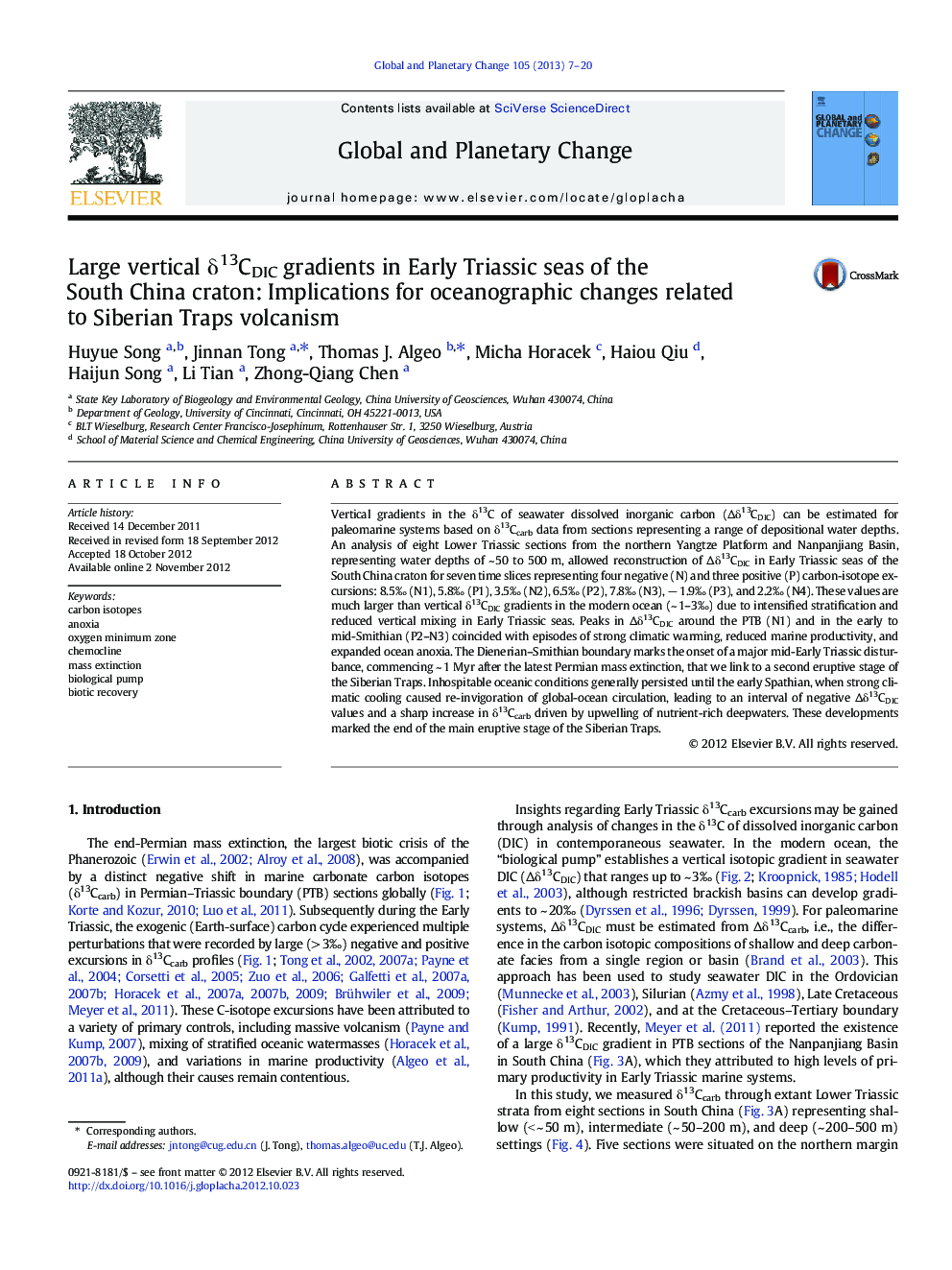| Article ID | Journal | Published Year | Pages | File Type |
|---|---|---|---|---|
| 4463599 | Global and Planetary Change | 2013 | 14 Pages |
Vertical gradients in the δ13C of seawater dissolved inorganic carbon (Δδ13CDIC) can be estimated for paleomarine systems based on δ13Ccarb data from sections representing a range of depositional water depths. An analysis of eight Lower Triassic sections from the northern Yangtze Platform and Nanpanjiang Basin, representing water depths of ~ 50 to 500 m, allowed reconstruction of Δδ13CDIC in Early Triassic seas of the South China craton for seven time slices representing four negative (N) and three positive (P) carbon-isotope excursions: 8.5‰ (N1), 5.8‰ (P1), 3.5‰ (N2), 6.5‰ (P2), 7.8‰ (N3), − 1.9‰ (P3), and 2.2‰ (N4). These values are much larger than vertical δ13CDIC gradients in the modern ocean (~ 1–3‰) due to intensified stratification and reduced vertical mixing in Early Triassic seas. Peaks in Δδ13CDIC around the PTB (N1) and in the early to mid-Smithian (P2–N3) coincided with episodes of strong climatic warming, reduced marine productivity, and expanded ocean anoxia. The Dienerian–Smithian boundary marks the onset of a major mid-Early Triassic disturbance, commencing ~ 1 Myr after the latest Permian mass extinction, that we link to a second eruptive stage of the Siberian Traps. Inhospitable oceanic conditions generally persisted until the early Spathian, when strong climatic cooling caused re-invigoration of global-ocean circulation, leading to an interval of negative Δδ13CDIC values and a sharp increase in δ13Ccarb driven by upwelling of nutrient-rich deepwaters. These developments marked the end of the main eruptive stage of the Siberian Traps.
► The δ13C of seawater dissolved inorganic carbon (DIC) provides information about carbon cycling within paleomarine systems. ► Vertical δ13C gradients in (Δδ13CDIC) were steep (to 8.5‰ at depths of 0 to 500 m) in Early Triassic seas of South China. ► Large δ13CDIC gradients were mainly due to enhanced water-column stratification rather than to elevated productivity. ► Intensified stratification resulted from eruption of the Siberian Traps and release of large quantities of greenhouse gases. ► Oceanographic changes during the Early Triassic provide insights into the timing and intensity of Siberian Traps eruptions.
